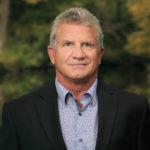As venues continue to be forced to cancel or modify events as a result of COVID-19, many are seeking reimagined ways to effectively engage with their fanbases. Whether it be concerts or sporting events, the ability for people to participate and involve themselves with an organization has been deeply altered in a way that suggests a new normal going forward.
For this installment of Conversations in Crisis, Rick Abbott, Chief Operating Officer at Circuit of the Americas (COTA), joins Jeff Hunt to dive into these topics and help organizations have a better understanding of what this new landscape might look like, and how they can navigate it.
Key Takeaways:
(02:05) The current state of events for COTA and other organizations:
-
-
Right now, venues have to be in the position of trying to discover what new and existing ways they can drive revenue for the rest of the year.
-
The mentality should be that you are weathering the storm, because audiences want to come back.
-
(04:35) Organize a situation room during this long-term crisis.
-
-
You should be learning and adapting on a daily basis. Things change so rapidly that you need to stay informed on current events at all times.
-
Communication is key. Employees are looking for leadership, and they need to understand the challenges ahead in order to mitigate their fears about what may be to come.
-
(08:55) One upside to this entire situation is that networks and entertainment organizations have an opportunity to try new ideas and see what works.
-
-
Audiences right now are incredibly forgiving, and if anything will be appreciative of the effort you are putting in to improve the fan experience.
-
(10:20) When you are in crisis mode, you have to revert back to the tenets of what made you great in the first place.
(13:10) As a leader, you need to resist the urge to be overly optimistic, because now is no time to take a victory lap when people and organizations are still suffering.
(16:57) When it comes to college sports, universities need to treat people as students first and athletes second.
(20:25) How to engage with audiences and key constituents has changed dramatically.
-
-
While the primary experience has a lot to do with what is happening on the stage, track, or pitch, venues need to be the realistic voice of “we will be here when everything comes back.”
-
Don’t put a date on something when there is so much unknown information.
-
Audiences want to be optimistic about seeing a different picture in the coming months.
-
(26:40) The PGA has been a great example of how to bring audiences back.
-
-
Viewers aren’t expecting perfection. It is okay to have a period where you are feeling out the new environment and adapting as things change. The cadence and broadcasting strategy needs to be flexible.
-
Expect new insight into the decision-making that an athlete goes through… for better or worse.
-
If networks came back and didn’t change anything, the viewer would not feel engaged. Fans are expecting innovation. Again, this is the time to experiment and try new things.
-
(33:45) Q&A
-
-
What are some ways that organizations can reimagine their offerings to keep their audiences engaged? What are some examples?
-
What considerations go into whether an event is delayed or completely canceled?
-

